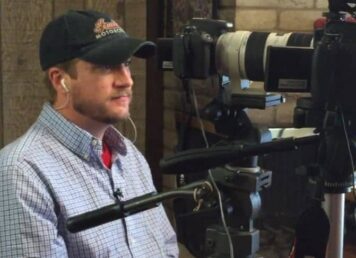Remedy Radio episode 004(20): How Hemp Can Save Humanity featuring: Jan Irvin, Richard Grove, Rob Christy Paul Verge & Adam Dodds.
Definition of Hemp: Hemp (from Old English hænep) is the name of the soft, durable fiber that is cultivated from plants of the Cannabis genus. “Hemp” is also a name for the Cannabis plant. Some use it to mean only the low tetrahydrocannabinol (THC) strains of the plant, although this is a neologism. In modern times, hemp has been used for industrial purposes including paper, textiles, biodegradable plastics, construction, health food and fuel with modest commercial success. Since 2007, commercial success of hemp food products has grown considerably.
History of Use: Hemp is used for a wide variety of purposes, an estimated 50,000 products can be produced from hemp in the United States, including the manufacture of cordage of varying tensile strength, everlasting clothing and nutritional products. Hemp seeds contain all the essential amino acids and essential fatty acids necessary to maintain healthy human life. Hemp use dates back to the Stone Age, with hemp fiber imprints found in pottery shards in China and Taiwan over 7,000 years old. They were also later used to make clothes, shoes, ropes, and an early form of paper. HEMP IS NON-TOXIC, and has NEVER caused a single human death due to overdose
.
Problem: Hemp became illegal in 1937.
Common Misunderstandings: Industrial Hemp is illegal, because the public is misinformed on the facts; these errors in making informed judgments prevent most people from internalizing the benefits of marijuana for health, and the solutions presented by hemp for almost everything else.
Historical Analysis:
1. The Present-Day Status Quo: the state of being, how things are today
a. The Status Quo is in direct conflict with human needs for survival
b. Observation: The things which keep you and me alive, are being poisoned.
i. Evidence thereof:
1. Air: toxic pollutants, chemtrails, radiation
2. Water: oil fracking and corporate pollutants, uranium, fluoride, privatization of water supplies- human rights being violated to make profits.
3. Food: GMO, radiation, pesticides based on peteroleum
4. Security: we compromise our health and security in an attempt to gain freedom, which is oxymoronic
c. Summary: Corporations are poisoning you and me, hemp prohibition allows corporations to rationalize poisoning you for profit, in its absence.
2. How did things get to be this way in America?
a. Origins of America and its Revolution
i. All homespun clothing and uniforms were made from Hemp
ii. An individual war ship of the time used dozens of tons of hemp (80 tons?), which required hundreds of acres to be grown to outfit each ship.
iii. First flag made of hemp sail canvas
iv. Founding Fathers grew hemp
1. George Washington: 40 acres of hemp
2. Thomas Jefferson: grew hemp and traveled the world in search of new strains
3. Ben Franklin owned a mill that made hemp paper. Jefferson drafted the Declaration of Independence on hemp paper, and the Constitution was written on Hemp paper.
a. Some quotes:
i. “We shall, by and by, want a world of hemp more for our own consumption.” – John Adams
ii. Thomas Jefferson’s Farm Journal (16 March 1791) “Hemp is of first necessity to the wealth & protection of the country.”
iii. “Make the most you can of the Hemp seed and sow it everywhere.” – George Washington
3) The Environment – PHYTOTECH (see webpage: www.phytotech.com/index.html ) specializes in phytoremediation, the general term for using phyto (plants) to remediate (clean up) polluted sites. Phytoremediation can be used to remove radioactive elements from soil and water at former weapons producing facilaties. It can also be used to clean up metals, pesticides, solvents, explosives, crude oil, polyaromatic hydrocarbons, and toxins leaching from landfills.
c. Plants break down or degrade organic pollutants and stabilize metal contaminants by acting as filters or traps. PHYTOTECH is conducting feild trials to improve the phytoextraction of lead, uranium, cesium-137, and strontium-90 from soils and also from water.
6. GLOBAL WARMING: HEMP EATS CO2.
7. SOURCE MATERIALS:
a. The Emperor Wears No Clothes by Jack Herer
b. Alcohol can be a Gas by David Blume
c. Hemp for Health by Chris Conrad
d. The Great Book of Hemp by Rowan Robinson











